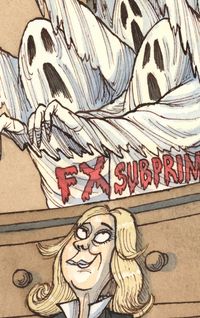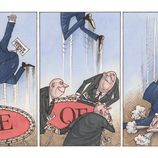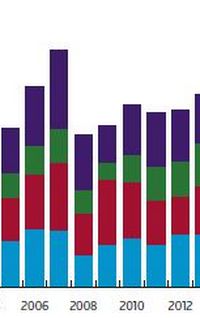2018 has been an exciting year for Green finance. It may not have been a record-breaking year for issuance, but the product has conquered new markets such as Schuldschein and commercial paper.

To focus on simple issuance numbers when it comes to Green finance in 2018 would be to miss the real story.
Yes, overall issuance was flat or a little down on 2017, reflecting the broader bond market environment (though European and euro currency issuance was up year-o- year, overcoming a drop in non-Green euro-denominated bond issuance). But, more to the point, 2018 saw Green finance extend its reach into new asset classes.
In September alone, renewable electricity outfit Encavis launched the first Green Schuldschein (in a €50m deal), while Vasakronan, a Swedish real estate company that issued one of the first Green corporate bonds in 2013, issued the first commercial paper to comply with ICMA’s Green bond principles. The deal, in partnership with SEB, came with three tranches, amounting to SKr610m (US$67m). This followed Rabobank’s first Green CP issue, for an initial €1.2bn, in August.
Christopher Kaminker, head of research, climate and sustainable finance at SEB, said: “In issuing Green commercial paper, Green finance has now moved to conquer one of the last corners of the debt capital markets.”
But that is not to say Green’s innovation phase is over, according to Orith Azoulay, global head of CIB Green and sustainable hub at Natixis. “We are nowhere near done with product innovation – there are a million things we can design in the area of both financing and investment products and solutions,” she said, specifically citing Green structured finance and securitisation.
Meanwhile, Belgium and Ireland added their names to the list of sovereigns that have gone Green, following France and Poland. The UK and the Netherlands are both considering issues in 2019, while Sweden has been considering the move for years but has so far refrained, citing its low borrowing requirements.
LEADING THE WAY
Outside the sovereign space, however, Sweden leads the way. In 2018, 14% of Swedish krona-denominated bond issuance was Green, up from 6% in 2017. In this, Sweden is an outlier. The market is still in its infancy, and the roughly US$500bn in Green bonds outstanding comprises half of one percent of the US$95trn broader bond market.
The roughly 2.5% of Australian dollar issuance, and 1.25% of Canadian dollar issuance, marked as Green in 2018 is closer to the average. This leaves plenty of room for growth, and most expect the coming year to see a resurgence of Green issuance, including a lot of refis of agency and municipal Green bonds issued in 2017.
The biggest driver for Green finance is the banks. BBVA issued Green senior non-preferred bonds in May (a €1bn seven-year deal) while Norway’s DNB and SpareBank issued Green covered bonds.
Antonio Keglevich, head of Green bond origination at UniCredit, said: “These institutions are responding to demand from SRI investors, who want Green bonds that take a portfolio view as opposed to a project view. These deals give them exposure to a broad range of Green assets, be they loans to renewable energy or energy efficiency, or green buildings.”
Execution costs remain slightly higher for Green bonds, but this has not dented interest. Increased regulatory attention on the risks around climate change, including flooding and wildfires, raises the possibility of non-green projects or issuance being penalised, for example with higher capital ratios or tax, which could equalise pricing.
And while costs might be higher, “there is less execution risk with Green bonds because you have this large additional group of SRI investors,” said Keglevich. “That could be a big driver next year. Issuers that want to take execution risk off the table can do that by issuing Green bonds.”
Investors have been lured into the Green market with evidence that returns are higher for Green and environmental social governance products.
“Across many asset classes, the addition of a Green component creates a lower risk profile, reducing the capital institutions need to hold against it,” said Emma Harvey, mid-corporate debt originator at Barclays. “Take the Barclays Green Home Mortgage product, for example, statistics show more energy-efficient homes are less likely to default and that allowed us to offer a more competitive product.”
This means that in an increasingly deep secondary market, Green bonds can outperform their non-Green peers, and often display less volatility.
Christopher Flensborg, head of climate and sustainable finance at SEB, said: “Green issuance empowers corporate treasurers; it gives them useful feedback about how they should position their companies. Investors definitely appreciate issuers doing Green bonds; it signals to them that C-level discussions are being had around the risk and opportunity-sides of Green finance.”
Another significant development in Green finance in 2018 came in May when the European Commission published a Ten-Point Action Plan, designed to encourage sustainable investment and increase transparency.
In the short term, the EC’s plan and the potential for regulatory uncertainty “has probably contributed to the relatively low issuance this year, as the market considers the implications for their own businesses”, said Keglevich. But that dampener should begin to clear as the market absorbs the new rules.
GREEN LOAN ALTERNATIVE
A lot of the action in Green finance in 2018 has come outside the bond market. Bond investors gravitate towards benchmark size deals of US$500m or more, making it hard for many issuers to do Green bonds. And with regulation and industry definitions still being formulated, many investors are cautious about Green bonds that may not comply with that classification in the future.
For this reason, “issuance of Green bonds is mainly focused on frequent bond issuers and focused on certain sectors with large capex [spending] on green projects”, said Peter Ellemann, managing director loan markets for the UK at ABN AMRO.
Green loans provide an alternative, more suitable to smaller or less regular issuers. In March, the Loan Market Association launched the Green Loan Principles to help encourage borrowers to tap the market. These voluntary guidelines were designed to closely follow the format laid down in the Green bond market.
As with bonds, Green loans have to meet certain standards in terms of reporting and management. The principles are applied by market participants on a deal-by-deal basis.
“The lenders already do a lot of due diligence on the loans they make, and reviewing the Green credentials of the borrower is just another part of that process,” said Gemma Lawrence Pardew, senior associate director in the legal team at the Loan Market Association.
Nobody keeps track of the number of loans being issued under the Green loan banner, but anecdotal evidence suggests they are being well used.
“The principles create a framework that everyone can understand and make Green loans more visible. That is very helpful in raising the profile of new markets,” said Clare Dawson, CEO at the LMA.
However, some have found the principles’ use of proceeds requirement problematic. Segregating assets to be used for a specific project can be impractical and deters potential borrowers. For investors too, conducting due diligence on a project-by-project basis is time-consuming and, for some, prohibitive.
Banks have therefore developed an alternative, the Sustainability Improvement Loan, or ESG-linked Loan. The issuer is rated by an ESG rating agency such as MSCI or Sustainalytics and the interest margin on the debt is adjusted based on the sustainability achievements of the borrower, with the proceeds available for general corporate purposes.
Phillips was the first to issue an SIL in April 2017 and the product has proliferated since then, to perhaps around 30 deals. The LMA is preparing to publish a second Green loan framework to cover SIL-type deals, though it has not confirmed when that framework will be published.
Roland Mees, director of sustainable finance at ING, said: “The product is likely to be popular in EMEA, where a lot of companies do have an holistic approach to management and isolating cash for a specific purpose is more difficult.”
While the Green loan and bond format is explicitly impact-oriented, ESG-linked loans are more sustainability performance-oriented, said Azoulay. The two serve different purposes and some issuers have used both.
“Among other things, ESG-linked loans provide internal value for the issuer because they directly tie its sustainability performance to its cost of funding. Most ESG-linked loans so far have been revolving facilities, so this is less of an investor story than Green term loans or Green bonds as defined so far by LMA and Green bond principles,” added Azoulay.
Mees said: “A variation on the SIL idea is instead of having the issuer rated, the debt is issued against specific KPIs, be that greenhouse gas emission reductions, renewable energy use or something else. The product is flexible; it can be tailored to the business needs of the client.”
Azoulay said: “Linking a loan to internal sustainability KPIs is a better option than linking to a rating. This gives issuers the leeway to choose the KPIs that best reflect what they are trying to achieve – more importantly KPIs that have an operational reality for the borrower, on which they have a greater influence and control without being exposed to methodology changes.”
This underlines the importance of flexibility. While strict definitions will give investors confidence in the market, it is also important that regulation does not put off potential issuers.
“If an initiative is good for the environment and leads to an institution improving its environmental performance, it should be encouraged to participate in this market,” said Keglevich. “We do not want Green finance to be an exclusive club and should not allow strict definitions to discourage issuers.”
Ultimately, Green finance will benefit from a higher level of nuance, said Rhian Mari Thomas, global head of Green banking at Barclays. “Credit ratings are not binary – they aren’t just strong or weak, there is a spectrum. Eventually we could see a similar nuance in the Green market, but first we need stronger definitions. We welcome any steps to provide more clarity in that sense, but there is a balancing act and we must be careful not to limit the ability to innovate,” she said.
To see the digital version of IFR Awards 2018, please click here.
To purchase printed copies or a PDF of IFR Awards 2018, please email gloria.balbastro@refinitiv.com.




















